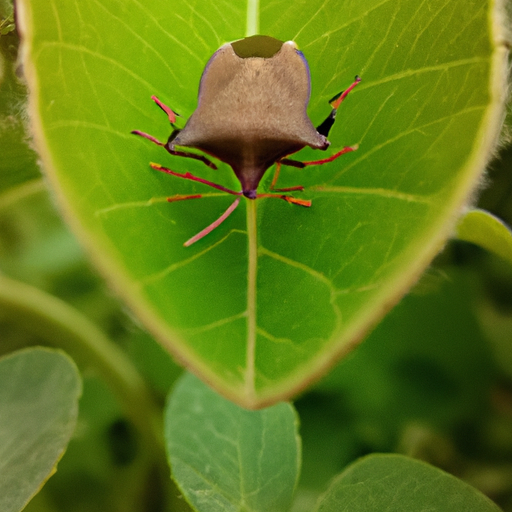 Radial symmetry is a fascinating structural arrangement found in many organisms across the animal kingdom. In this article, we will delve into the world of radially symmetrical animals, exploring their diverse characteristics and the advantages this symmetry provides. From jellyfish to sea anemones, let us embark on a journey through the vast array of creatures that exhibit radial symmetry.
Radial symmetry is a fascinating structural arrangement found in many organisms across the animal kingdom. In this article, we will delve into the world of radially symmetrical animals, exploring their diverse characteristics and the advantages this symmetry provides. From jellyfish to sea anemones, let us embark on a journey through the vast array of creatures that exhibit radial symmetry.
Radial symmetry refers to a type of symmetry wherein an organism’s body can be divided into multiple identical parts radiating from a central axis. These organisms typically lack a distinct front or back, left or right side, and exhibit equal parts arranged around a central point. This unique symmetry is most commonly observed in aquatic organisms due to the hydrodynamic benefits it offers.
One of the most well-known examples of radially symmetrical animals are jellyfish. These graceful, gelatinous creatures belong to the phylum Cnidaria. Jellyfish have a bell-shaped body with tentacles extending downwards. Their bodies are divided into equal sections, with each section containing a mouth, sensory organs, and stinging cells called cnidocytes. This radial symmetry allows jellyfish to capture prey from any direction, ensuring a higher chance of successful feeding.
Another fascinating group of radially symmetrical animals is the sea anemones. These stationary creatures are also members of the phylum Cnidaria and are closely related to jellyfish. Sea anemones have a cylindrical body with tentacles surrounding their mouth, which is located at the center of their body. Their radial symmetry allows them to capture prey from any direction, making them efficient predators.
Moving away from the Cnidarian phylum, we encounter a group of animals known as echinoderms, which also exhibit radial symmetry. Echinoderms include creatures such as starfish, sea urchins, and sea cucumbers. These animals possess a five-fold radial symmetry, with their body divided into five symmetrical sections. Their radial symmetry allows them to move in any direction, regenerate lost body parts, and exhibit remarkable regenerative abilities.
Starfish, or sea stars, are perhaps the most iconic echinoderms. They have a central disk-shaped body with multiple arms radiating outwards. Each arm contains a complex network of tube feet, which they use for locomotion and capturing prey. Starfish exhibit radial symmetry not only in their body structure but also in their water vascular system, which helps with movement and feeding.
Sea urchins, on the other hand, have a spherical or disk-shaped body covered in spines. These spines are arranged symmetrically around the body, giving them a radial appearance. Their radial symmetry allows them to navigate through rocky environments, graze on algae, and protect themselves from potential predators.
Sea cucumbers are soft-bodied organisms that exhibit a more elongated and cylindrical shape compared to other echinoderms. They possess an anterior mouth surrounded by feathery tentacles and are often found on the ocean floor. Despite their somewhat elongated body shape, sea cucumbers still exhibit radial symmetry, allowing them to move and feed efficiently.
Beyond the world of jellyfish, sea anemones, and echinoderms, other lesser-known creatures also exhibit radial symmetry. These include organisms such as comb jellies (phylum Ctenophora), certain sponges (phylum Porifera), and some microscopic planktonic organisms like radiolarians and diatoms.
Comb jellies, although resembling jellyfish, belong to a separate phylum. They possess a gelatinous body with rows of cilia, which they use for locomotion. Comb jellies exhibit an eight-fold radial symmetry, with numerous rows of combs running along their body. This symmetry allows them to propel through the water in a coordinated and efficient manner.
Sponges, despite their seemingly simple structure, possess radial symmetry at the cellular level. Although they lack distinct body parts or organs, their cells are arranged in a radial pattern around a central cavity called the osculum. This structure allows water to flow through the sponge, facilitating feeding and gas exchange.
In the vast and diverse world of microscopic organisms, radiolarians and diatoms also exhibit radial symmetry. Radiolarians are single-celled organisms surrounded by intricate mineral skeletons, often resembling delicate glass sculptures. These skeletons exhibit radial symmetry, with intricate patterns radiating from a central point. Diatoms, on the other hand, are single-celled algae with a cell wall made of silica. Their cell walls often display radial symmetry in various intricate and beautiful patterns.
In conclusion, radial symmetry is a remarkable adaptation found in a wide range of animals, both large and small. From jellyfish and sea anemones to echinoderms, comb jellies, sponges, and microscopic organisms like radiolarians and diatoms, this symmetry allows these creatures to thrive in their respective environments. Whether it be capturing prey, efficient movement, or regenerating lost body parts, radial symmetry offers numerous advantages to these fascinating creatures. By studying and appreciating the diversity of radially symmetrical animals, we gain a deeper understanding of the incredible adaptations nature has developed throughout evolutionary history.
